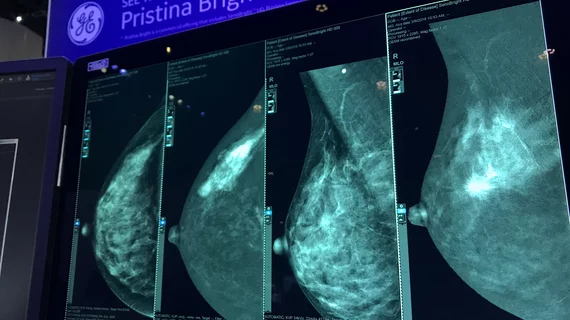ACR CEO outlines top trends in breast imaging
The new American College of Radiology (ACR) CEO Dana H. Smetherman, MD, MPH, MBA, is a diagnostic radiologist who has specialized in breast imaging. While she is taking on bigger responsibilities in the overall field of medical imaging, she shared her top two areas of interest in breast imaging in a recent interview with Health Imaging.
Prior to taking on her new role as the first female CEO of ACR in July, she was the chair of the department of radiology and associate medical director for medical specialties at the Ochsner Medical Center in New Orleans. She has previously served on the ACR Board of Chancellors, chaired the ACR Breast Commission, chaired the ACR Breast Imaging Economics Committee and served as a board member for the American College of Surgeons National Accreditation Program of Breast Centers.
Two top areas she said radiologists and other radiology professionals should watch closely are:
Addressing health inequities and high-risk populations in breast screening
This is an important area for Smetherman; she has both a medical degree and a public health degree. Health and radiology informatics systems can now be data mined with analytics and artificial intelligence software to offer new opportunities to propel population health programs.
She feels more efforts are needed to ensure patients at a higher risk for breast cancer are aware of their increased risk and have access to both routine screening and supplemental screening tests as needed. This includes advocating for policies to ensure coverage and access to supplemental imaging technology, including in women with dense breast tissue. Information technology also can be leveraged to better identify these patients based on information in their electronic health records.
Beyond that, she said there are a lot of lower-income and minority patients who lack access to breast screening services.
"Underrepresented minorities, including virtually every non-white ethnic group, have a higher incidence of breast cancer at a younger age than white women. We need more awareness among patients and referring physicians and providers so that patients at higher-than-average risk are identified and breast cancer screening is not delayed in these patient populations," she explained.
The COVID-19 pandemic publicly exposed many health equity issues in the United States. While these health disparities had simmered for years and physicians and medical societies were aware of them, the pandemic magnified them.
"I think we all were aware of the issues, but now it's just right in all of our faces," Smetherman noted in a 2021 ARC Taking the Lead podcast interview. "I think we will have unique opportunities, and particularly because of our involvement in screening to promote health equity. And so, I think obviously we're going to have to partner with lots of different people, primary care, population health and multiple specialties."
In 2021, the ACR helped create the Radiology Health Equity Coalition, which she said was "incredibly inspiring" and would be an exciting direction for the ACR. Now that she is CEO, she hopes more action can be taken to better level the playing field and enable better access to screening programs.
Expanding use of contrast enhanced mammography
A newer breast imaging technology Smetherman is excited about is contrast enhanced mammography (CEM), which uses an iodine contrast injection during a digital mammogram to highlight areas of abnormal blood flow and potentially improve detection of breast cancers. Early research has shown that CEM may increase breast cancer detection rates, especially in women with dense breast tissue, which can often hide cancers on regular mammograms.
CEM is FDA-cleared for diagnostic breast imaging to look at the extent of cancer in patient with newly diagnosed breast cancer, to check a cancer’s response to chemotherapy before surgery, and assess abnormalities seen on standard mammograms. CEM is being evaluated for breast cancer screening, especially in women with dense breasts. Data so far shows that CEM detects about 10 cancers for every 1,000 women screened, which is similar to breast MRI. Although more research (like the ACR’s Contrast-Enhanced Mammography Imaging Screening Trial or CMIST) is still needed, the hope is that CEM will be a more sensitive and specific breast cancer screening test than mammography alone.
Smetherman said Ochsner deployed CEM during the last year she was there, and the procedure was well tolerated by patients. Although much more work remains to determine optimal, personalized breast cancer screening strategies for women of different risk levels, CEM is showing promise as another tool to detect breast cancer early and ultimately help save more lives.

